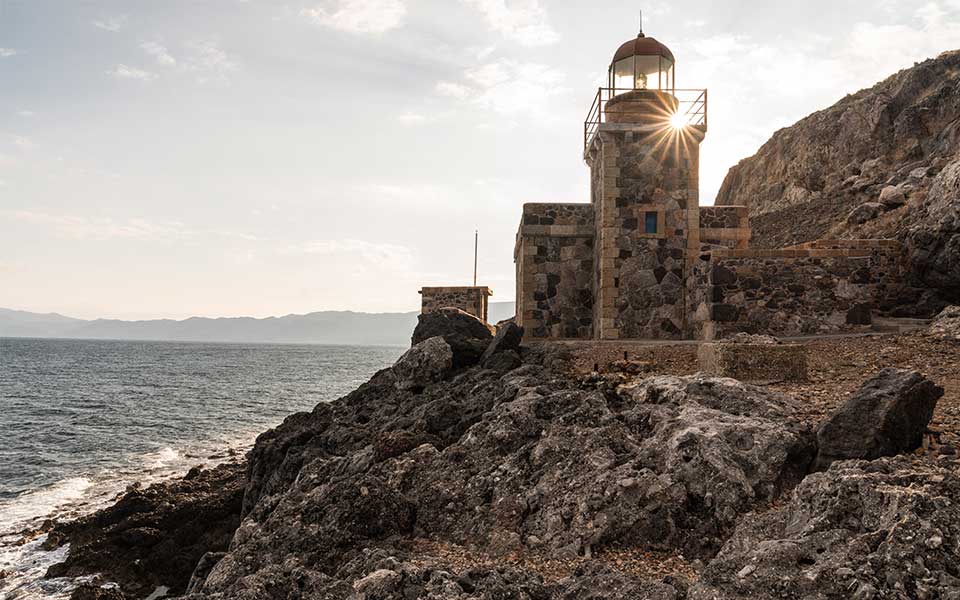Monemvasia has one foot in the present and another in the past.
To reach this medieval town, visitors must first pass through the modern village of Gefyra – not particularly attractive but with all the basic amenities one might expect, and just the place to stop and sample some traditional sweets such as almond biscuits and samousades (similar to baklava) before heading to the citadel jutting out from the sea just ahead.
Leave your car in the parking lot at Gefyra and cross the causeway on foot. After all, Monemvasia has no streets, only cobblestone paths.
Time here appears to have stopped, as nearly all of the buildings date from the Byzantine, Venetian or Ottoman eras. Painted largely in earth tones of ochre and russet and boasting graceful arches and red-tiled rooftops, Monemvasia’s buildings are truly enchanting. Today, the majority serve as vacation homes, guesthouses, souvenir shops, cafés or bar-restaurants, with only a handful of year-round residences; off-season life in this small walled town isn’t for everyone.
1. Visit the Lighthouse and the Portelo
The town’s main thoroughfare starts at the main gate and is lined the whole way with cafés, restaurants and shops. This is where you’ll find Kelari and Edodimopoleio, two traditional deli/grocery stores.
The walkway ends at the East Gate, although a path continues the short distance to the lighthouse outside the walls, where you can enjoy a quiet moment looking out at the Myrtoan Sea.
There used to be another main lane that linked the Portelo, a gate on the seafront, to Ano Poli (Upper Town), but over the years, that lane disappeared, although the gate is still there. Today it’s used to reach the other side of the stout town walls, where a stone ramp and an outcropping of rocks comprise Monemvasia’s only in-town swimming spot.
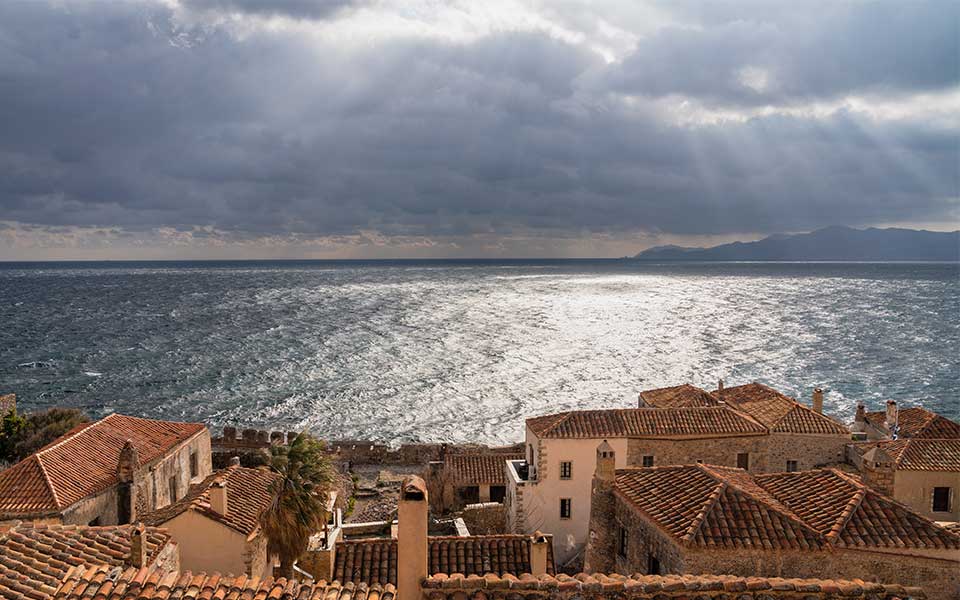
© Nicholas Mastoras
2. Explore Ano Poli
Put on some comfortable walking shoes and head to Ano Poli, up the footpath known as “Voltes.” Settled before Kato Poli (Lower Town), Ano Poli was gradually deserted in the years following the second period of Venetian rule (1685-1715). Today, the entire area is considered publicly owned land and is administered by the Greek Archaeological Service.
Its key monument is the Church of Hagia Sophia, dating from 1150, which is widely believed to be a copy of the famous church of the same name in Istanbul. In fact, that’s not true, as this church was originally dedicated to the Virgin Mary rather than Saint Sophia. It is, nevertheless, a beautiful church and a valuable part of Monemvasia’s architectural treasure trove.
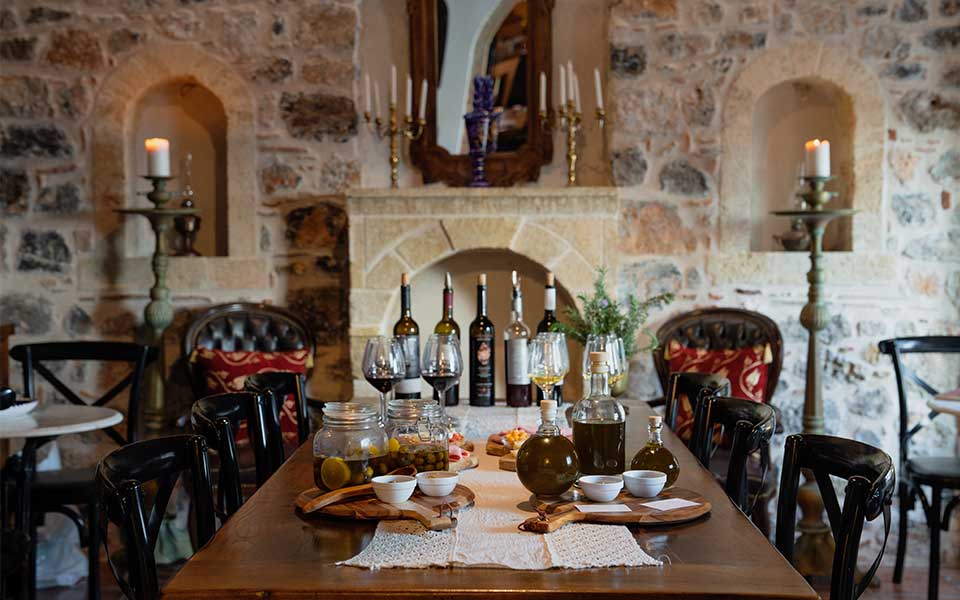
© Nicholas Mastoras
3. Enjoy Wine and olive oil tastings
The square known as “Tapia” in the local dialect has as its crowning glory the Church of Panaghia Chrysafitissa. Right beside it stands the Kellia guesthouse, once the family home of the renowned Greek poet Yiannis Ritsos (it’s said that he was actually born in this building).
Today it hosts tastings of Peloponnesian wines, such as the organic red Mavroudi from Estate Theodorakakos, the white Kydonitsa from Vatistas Winery and the semi-dry rosé Anthosmias from Monemvasia Winery Tsimbidis. The wines are served with graviera cheese and capers.
Alternatively, you can sample cold-pressed organic olive oils made from the Athinolia and Koroneiki varieties.
Don’t hesitate to ask your hosts at the guesthouse if you have any questions whatsoever. They are incredibly friendly and very knowledgeable about the area and its products.
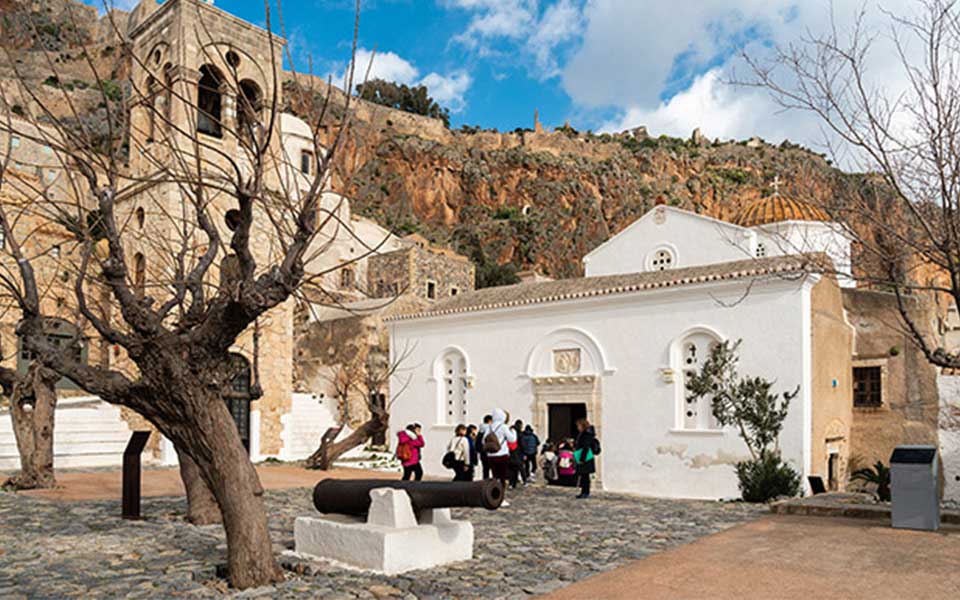
© Nicholas Mastoras
4. Admire the Church of Elkomenos Christos
The Church of Elkomenos Christos is the first thing you’ll notice on the square with the cannon in the middle of town. Even though this is Monemvasia’s main church, there is nothing ostentatious about it. So simple in appearance that it nearly blends into its natural surroundings, it stands out only by virtue of the fact that its facade is painted white, in contrast to the earth tones on the surrounding buildings.
It was probably built sometime in the 6th or 7th century and has undergone numerous transformations. Its sparse exterior does not prepare visitors for what is on display inside: a massive icon of the Crucifixion that dates from the Palaeologan Renaissance (a short but culturally vibrant period during which the Palaeologos dynasty sought to restore the Byzantine Empire’s glory).
It is a stunning piece of ecclesiastical art that was looted and, after undergoing several adventures, eventually made its way back to Monemvasia. Photographs are not allowed, so you’ll just have to rely on your memory.
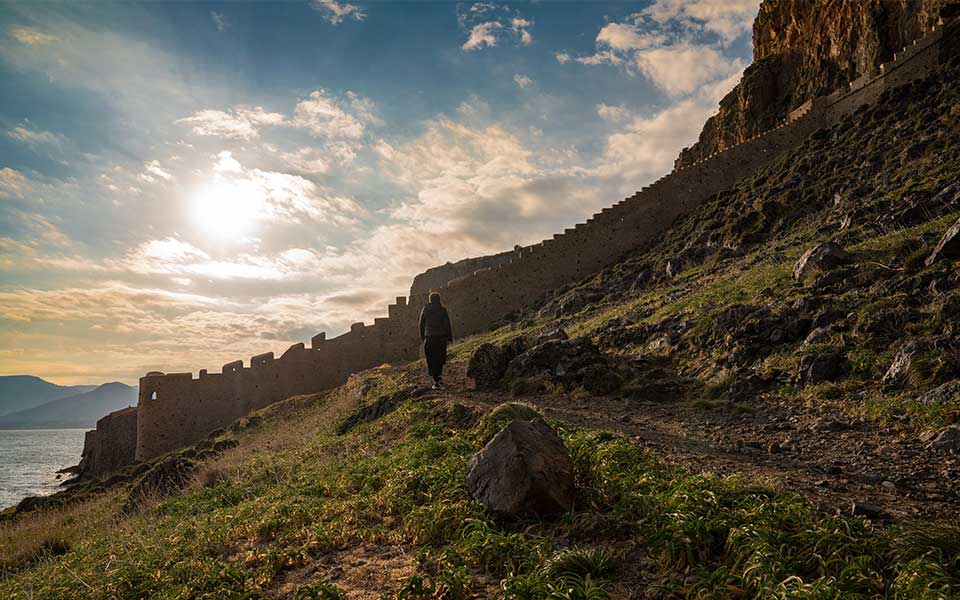
© Nicholas Mastoras
5. Explore Photographs of Monemvasia’s past
For a glimpse of yesteryear’s Monemvasia, look for “Monemvasia: People, Place, Presence” (Unicorn, 2019), a lovely English-language coffee-table book of mainly black-and-white photographs capturing simple scenes, such as a local man in a traditional kilt-like skirt standing in the middle of the main street, children straddling the cannon during some celebration, Yiannis Ritsos smoking and goats grazing among the ruins of collapsed arches.
The British writer Brian W. Aldiss once described Monevmasia as a “wonderful place,” where “only eagles and artists” should be allowed. This book perfectly captures that poetic aspect of Monemvasia.
6. Sip Wine from Shakespeare’s time
Monemvasia Winery Tsimbidis is particularly notable in that it was created for one purpose only: to revive Malvasia, a historic wine produced in Monemvasia during the Middle Ages. References to this tipple can be found in Shakespeare – George in “Richard III” is drowned in a cask of the stuff, referred to as Malmsey wine – and in earlier sources as well.
Production of Malvasia had ceased a long time ago, but the practice was restarted in recent times by the owner of Monemvasia Winery, Giorgos Tsimbidis, whose wine was granted protected designation of origin (PDO) status as Monemvasia-Malvasia. It is a sweet wine made from a blend of the Monemvasia, Kydonitsa, Asproudes and Assyrtiko grape varieties.
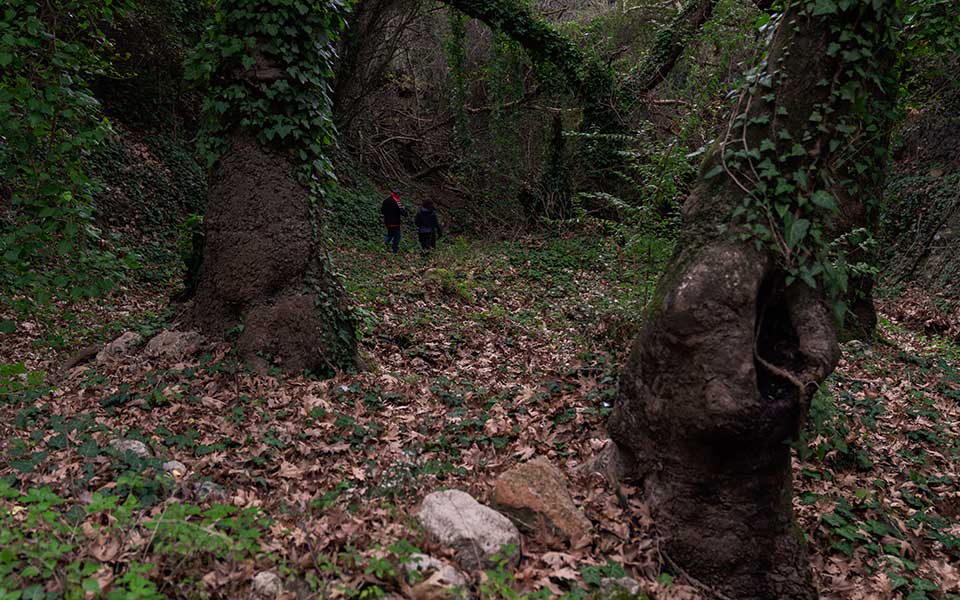
© Nicholas Mastoras
7. Go on Nature hikes
Another interesting excursion you should make time for is a trip to Talanta, a beautiful verdant village in the Laconian hinterland, about half an hour from Monemvasia. Practically untouched by tourism, the area around Talanta offers nature at its grandest, and there is a good network of trails through the surrounding forest.
Inside the village, there’s an old watermill that has been restored – to the delight of visitors – and operates every Saturday from 10:00 to 15:00, producing good-quality whole-wheat flour.
Info
For further information on the watermill or the hiking trails,
Tel. (+30) 697.721.2475

